
A stone circle in Dartmoor was recently discovered and is estimated to be as old as the world-famous Stonehenge. These two perplexing landmarks aren't the only ones to be found on a tour through Britain.
We've amassed a list of the best stone circles to visit in the UK. Read on to find out which ones hit the mark when it comes to mystery and intrigue.
.........................................................................................................................................................
1. Sittaford Tor, Dartmoor
.........................................................................................................................................................
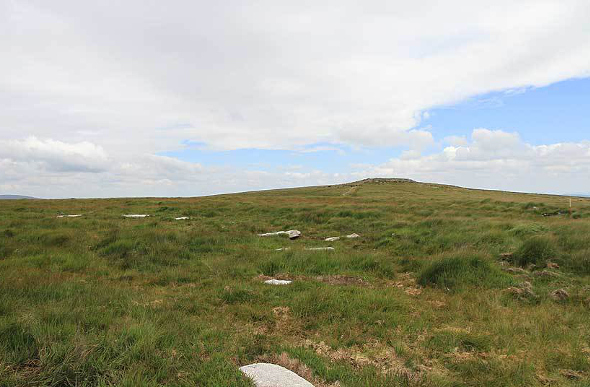 Sittaford Tor (Image: Dartmoor National Park Authority)
Sittaford Tor (Image: Dartmoor National Park Authority)
The first radio-carbon testing ever carried out on a stone circle on Dartmoor's open moorland has shown that the stones at Sittaford Tor fell over some 4,000 years ago, meaning they might have been built considerably before this.
Mike Nendick, from Dartmoor National Park authority, said the dating showed that the ring, 34 metres in diameter, could be of a similar age to Stonehenge, which was built between 2,000 and 3,000 BC.
.........................................................................................................................................................
2. Stonehenge, Wiltshire
.........................................................................................................................................................
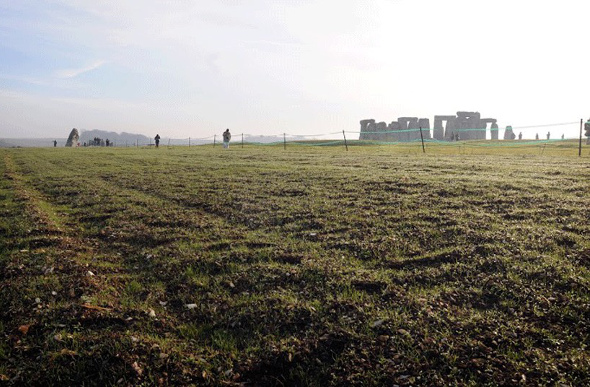 Stonehenge (Image: Clare Kendall/English Heritage)
Stonehenge (Image: Clare Kendall/English Heritage)
One of Neolithic man’s most startling achievements, Stonehenge began as a henge – a ditch and bank of earth – in around 3,000 BC, to a monument of growing importance, featuring first ‘bluestones’ from Wales and later mighty sarsens from the Marlborough Downs.
It probably started as a cremation site and ended as a solar temple. Around 1,600 BC work stopped, leaving the stone circle roughly as it is today. The visitor centre opened here in late 2013.
.........................................................................................................................................................
3. Avebury, Wiltshire
.........................................................................................................................................................
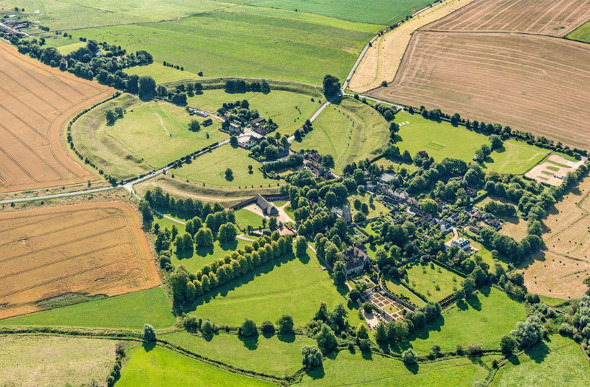 Avebury stones (Image: Clare Kendall/English Heritage)
Avebury stones (Image: Clare Kendall/English Heritage)
Dating from between 2850 BC to 2200 BC, Avebury rivals Stonehenge in size and complexity. It is surrounded by a circular bank and ditch which encloses three circles. According to English Heritage, many stones had been broken in medieval times, one crushing its destroyer as it fell.
.........................................................................................................................................................
4. Castlerigg, Lake District
.........................................................................................................................................................
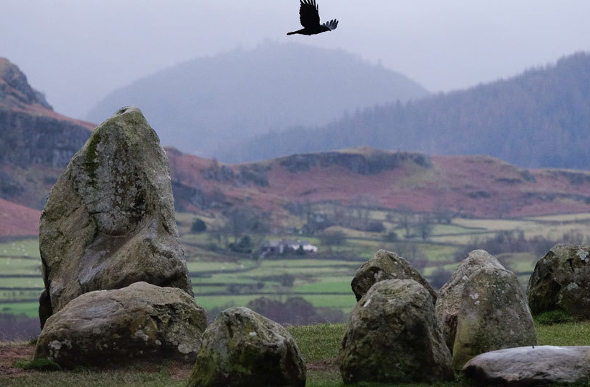 Castlerigg ring (Image: Clare Kendall/English Heritage)
Castlerigg ring (Image: Clare Kendall/English Heritage)
The walk up scenic fells is part of the joy in reaching this ring of 55 stones, which if nothing else, provides a good spot in which to rest and take in the views of Helvellyn and High Seat. Grasmere provides a good starting point. This is also one of the UK’s oldest circles raised in about 3000 BC during the Neolithic period.
Would you stay here? Trading Hotels For Caves In The UK’s Lake District
Where knights fought dragons. Uncovering The UK’s Mythical Locations
.........................................................................................................................................................
5. Stones of Stenness And The Ring of Brodgar, Orkney
.........................................................................................................................................................
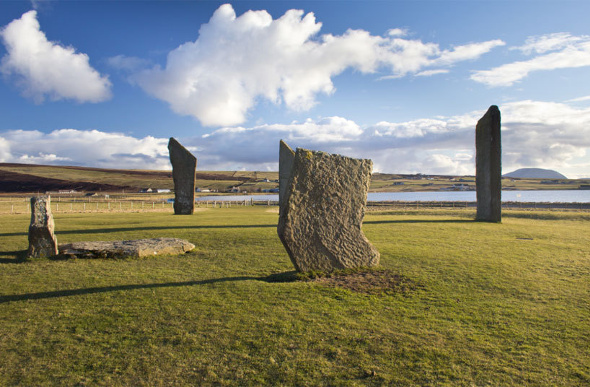 Stones of Stenness (Image: Clare Kendall/English Heritage)
Stones of Stenness (Image: Clare Kendall/English Heritage)
Some of the UK’s earliest stone circles, constructed between 4,500 and 4,000 years ago, these are two of Britain’s best preserved prehistoric monuments. Of the 60 that originally made up The Ring of Brodgar, 36 still stand and form a near-perfect circle.
They were probably built by those responsible for the tomb at Maes Howe, nearby, which points towards the rising midwinter sun. It is thought that the stones were used in ceremonies to celebrate ancestors.
.........................................................................................................................................................
6. Arbor Low, Derbyshire
.........................................................................................................................................................
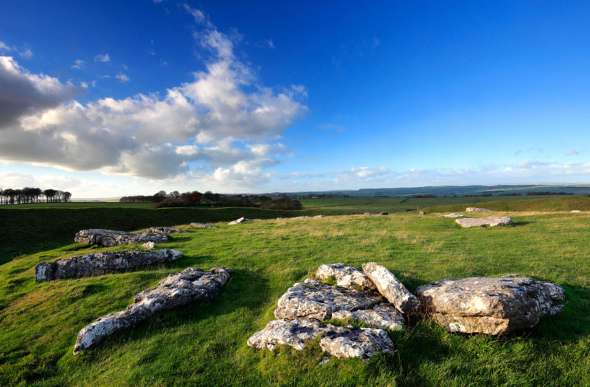 Arbor Low (Image: Clare Kendall/English Heritage)
Arbor Low (Image: Clare Kendall/English Heritage)
Though most of the stones lay flat, this ring of white limestone (from 2500 BC) is nonetheless a dramatic site, sitting in high moorland. It has a cove in its centre, a feature only found on sacred sites of significance. Gib Hill, a Bronze Age burial mound, lies 200 metres away, which may have once been connected with Arbor Low by an earth bank.
.........................................................................................................................................................
7. Scorhill, Dartmoor
.........................................................................................................................................................
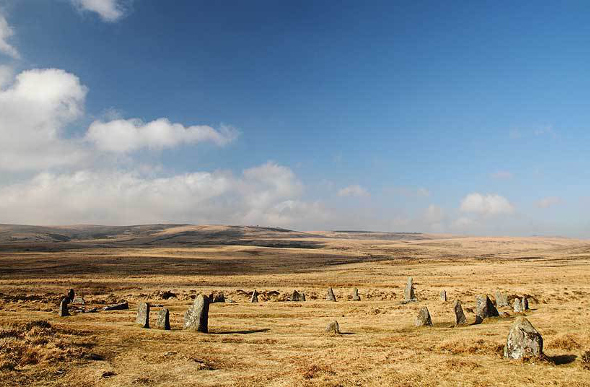 Scorhill ring (Image: Dartmoor National Park Authority)
Scorhill ring (Image: Dartmoor National Park Authority)
Near the village of Gidleigh, this is an English Heritage scheduled monument and has been described as one of Dartmoor's finest rings, due to its size and the fact that it is fairly intact. Locals say that animals, such as horses or cattle, will not be led through the stones.
.........................................................................................................................................................
8. Long Meg And Her Daughters, Cumbria
.........................................................................................................................................................
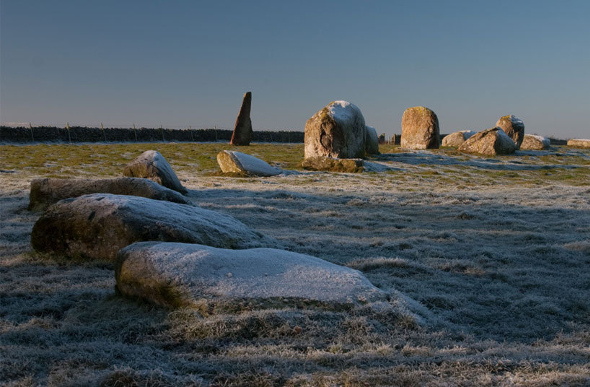 Long Meg and family (Image: Dartmoor National Park Authority)
Long Meg and family (Image: Dartmoor National Park Authority)
To the north of Penrith, Long Meg is made of sandstone and stands four metres tall, wearing three mysterious symbols. Her corners are aligned with the direction of the four compass points. Her daughters are probably granite rhyolite. Wordsworth wrote about Meg and legend has it that she was a witch who, along with her daughters, was turned to stone for dancing on the moor on the Sabbath.
.........................................................................................................................................................
9. Rollright Stones, Cotswolds
.........................................................................................................................................................
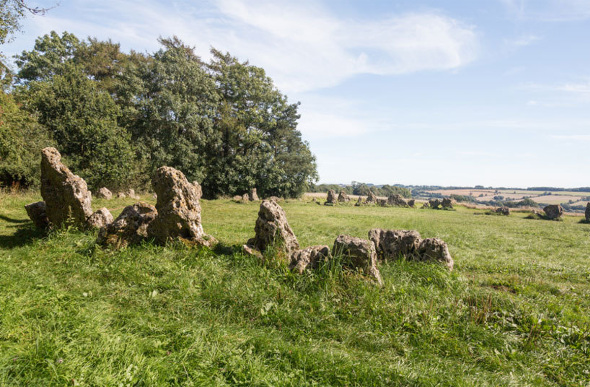 The Rollright Stones (Image: Dartmoor National Park Authority)
The Rollright Stones (Image: Dartmoor National Park Authority)
Folklore holds that these stones are the petrified bodies of a monarch and his courtiers – the work of a witch. The site contains three groups of limestone stones: the King’s Men circle; the Whispering Knights burial chamber and the single King Stone. Stones which had fallen were replaced in 1882.
.........................................................................................................................................................
Visit your local Flight Centre or call 131 600 for more advice and the latest deals on travelling to Britain.
.........................................................................................................................................................
This article was from The Daily Telegraph and was legally licensed through the NewsCred publisher network.










